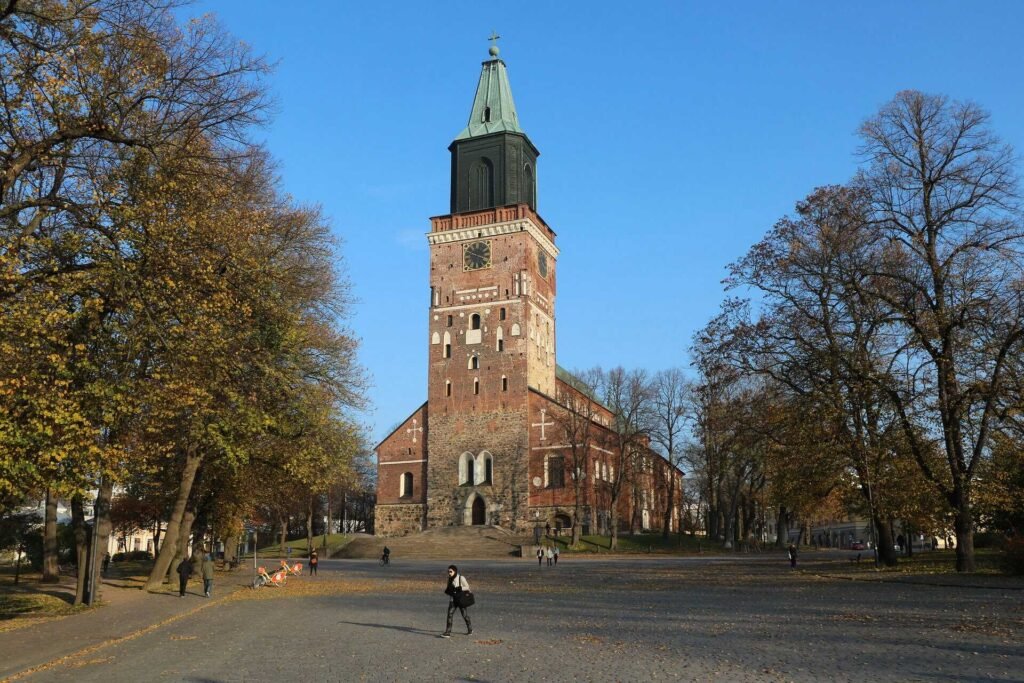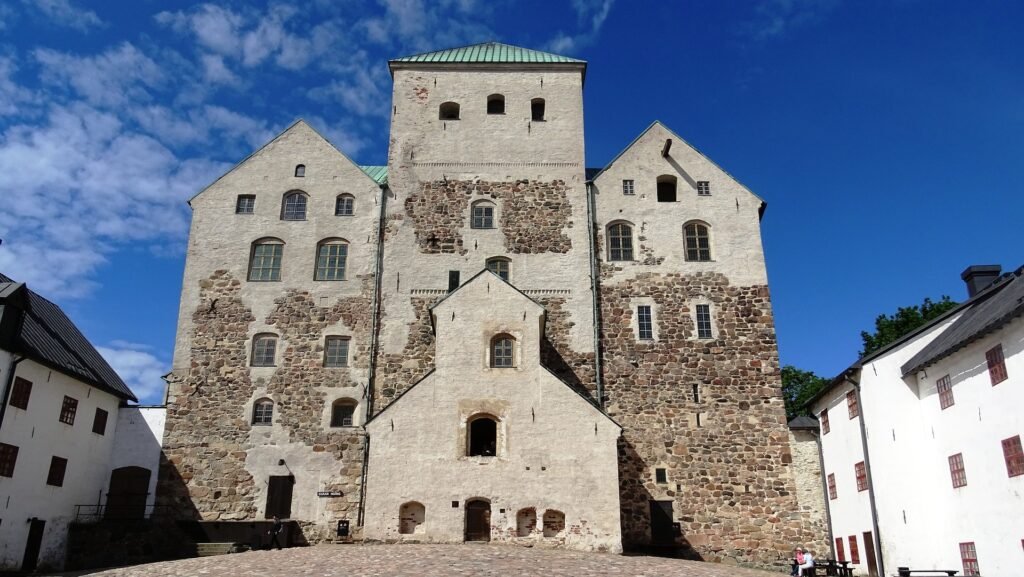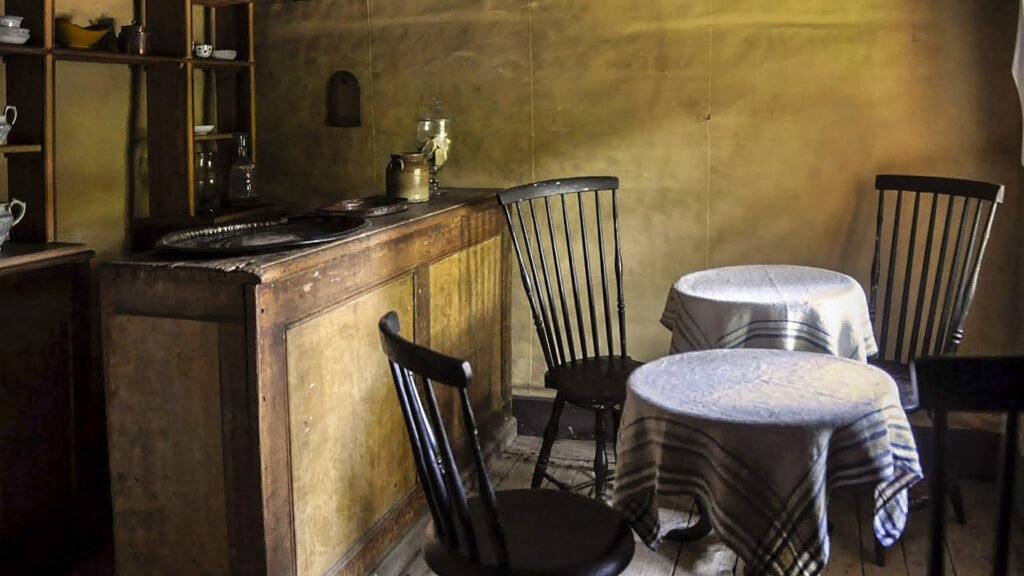Last Updated: April 4, 2024 |Tracue
TURKU CATHEDRAL | EVERYTHING YOU NEED TO KNOW
Turku Cathedral is an attractive place for tourists and spiritual people. The cathedral was built in the heart of the city of Turku in the late 13th century during Swedish rule. This magnificent cathedral stands as a testament to the brilliance of Finnish history, culture, and architecture. Turku Cathedral, also known as Turun Tuomiokirkko in Finnish, is an impressive blend of Gothic and Romanesque styles. Its striking facade, adorned with intricate stone carvings and majestic columns, makes all who see it bow in reverence. Beyond the architectural beauty, Turku Cathedral serves as a sacred place, hosting events ranging from centenary royal coronations that are national to the Finnish people. It stands as a sacred symbol of identity and pride.
THE COLORFUL HISTORY OF Turku Cathedral
Architectural Evolution of Turku Cathedral
Construction of Turku Cathedral began in the 13th century when Turku was growing in importance as an important trading center in Finland. The cathedral was initially smaller in size compared to its present form. It was built on the site of an earlier wooden parish church on the mound of Unikanker. The cathedral was dedicated to the Blessed Virgin Mary under the patronage of St. Henry, the first bishop of Finland.
The cathedral exhibits the influence of Gothic, Romanesque, and Baroque architectural styles. Its exterior showcases stonework, delicate arches, and lofty spires characteristic of Gothic design. A defining feature of Turku Cathedral is its red-brick facade. The use of brick not only gives the cathedral a distinctive appearance but also reflects the architectural preferences of the era
Over time, Turku Cathedral has been extended and modified. Notable additions include a new choir in the 14th century and side-chapels dedicated to saints in the 15th century. The cathedral underwent several transformations, including raising the roof-vaults to their current height of 24 meters. The tower was rebuilt several times after the Great Fire of Turku in 1827.
Notable Burials in Turku Cathedral's History:
Among the notable events in the history of Turku Cathedral, Hemming, the 12th Bishop of Turku who oversaw the major restoration of Turku Cathedral in the 14th century, was buried in the cathedral after his death. His remains were later moved to a niche in the north aisle of the church in 1514. Another historically important figure, Queen Consort Karin Mansdotter, who was briefly Queen of Sweden, was also buried in the cathedral, first in the Tot Chapel, and later in the 19th century in the Kankas Chapel.
A Journey of Restoration:
The cathedral underwent significant restoration after the Great Fire of Turku in 1827. The current spire of the tower, 101 meters above sea level, was built after the Great Fire and stands as a symbol of both the cathedral and the city of Turku. Much of the current interior, including the high altar and pulpit, dates from the 1830s.It was restored in that decade. In 1836 Swedish artist Fredrik Westin painted the Transfiguration of Jesus for the altarpiece. The pulpit and radome behind the high altar were designed by the German architect Karl Ludwig Engel. In addition, frescoes in the romantic style of the court painter Robert Wilhelm Ekmann cover the walls and ceiling of the chancel depicting events from the life of Jesus and significant moments in the history of the Finnish Church. Additionally, the cathedral has three organs, the main organ of which was built in 1980 by Veiko Virtanen Oy of Espoo, Finland.
Cultural Sanctum: The Enduring Significance of Turku Cathedral
Turku Cathedral has cultural and traditional importance beyond its architectural beauty. Over the centuries, ceremonies such as coronations, weddings, and funerals have been held here. Every year during the Christmas celebrations, the cathedral becomes a focal point for the people of Finland. Apart from these events, exhibitions and other cultural events are held here. Due to which many visitors come here every year. Apart from these events, the cathedral also plays an important role in religious life, such as regular services, ceremonies, and spiritual gatherings, which is why the cathedral serves as a beacon of hope and inspiration for believers and non-believers alike.
Turku Cathedral Museum:
The Turku Cathedral Museum is located inside the cathedral itself. When you step inside the Turku Cathedral Museum, you will be swept away by the museum’s enchanting magic. The museum provides insight into the history of the city of Turku alongside the cathedral. Through curated exhibits and artifacts, visitors can get an idea of the changes the cathedral has undergone since its inception.
Inside the museum are beautifully preserved carved sculptures, ornate altars, and religious artifacts. Through these artifacts in the museum, you can easily get an idea about the construction of the cathedral and the religious beliefs. The cathedral museum is a place where, if you spend some time, you will feel that every historical monument is alive here, which really helps you sink into the past.
The Timeless Legacy: Turku Cathedral Clock
One of the hallmarks of the historic Turku Cathedral is its clock. This clock is one of Finland’s public clocks and is still functional today. In the Great Fire of 1827, the bell tower was completely destroyed and many parts of the clock were damaged. The clock is restored and installed. The clock not only serves a practical purpose in telling time but also has symbolic significance as part of the cathedral’s rich history and cultural heritage. The clock’s 12 o’clock ring has been broadcast on public radio since 1944. It can still be heard daily on Yle Radio 1.
SURROUNDING ENVIRONMENT:
Besides enjoying the beauty of Turku Cathedral, you can visit Turku Castle if you want. Just a short distance from the cathedral is Turku Castle; you will be mesmerized by its architectural beauty. Visitors can enjoy the natural environment by walking along the banks of the Aura River. Moreover, you can enjoy the lively atmosphere of local markets, shops, and cafes.
Visitor Information:
Opening hours: The cathedral is open to the public daily from 9 am to 6 pm. However, this time schedule may change slightly during special religious services or events.
Guided Tour: Interested visitors can take a guided tour if they want to know more about the history and architecture of the cathedral.
Admission: There is no entrance fee to the cathedral. Anyone can enter the cathedral for free and enjoy its beauty. However one can donate for its maintenance if one wishes.



